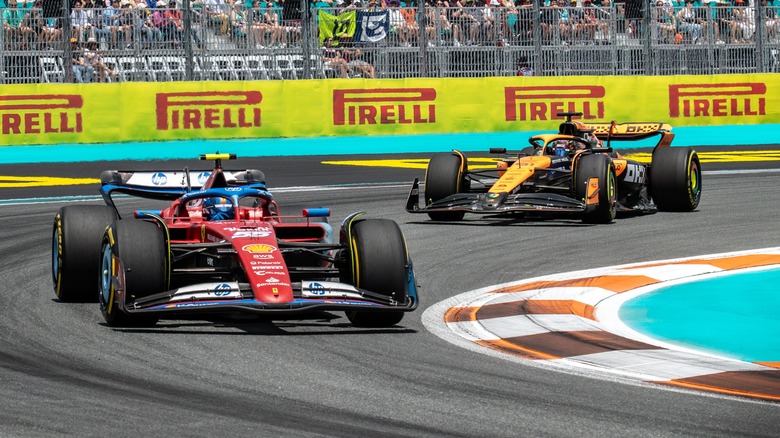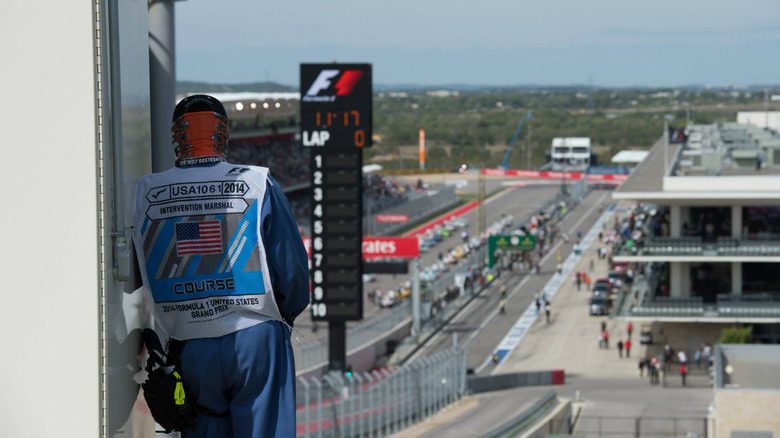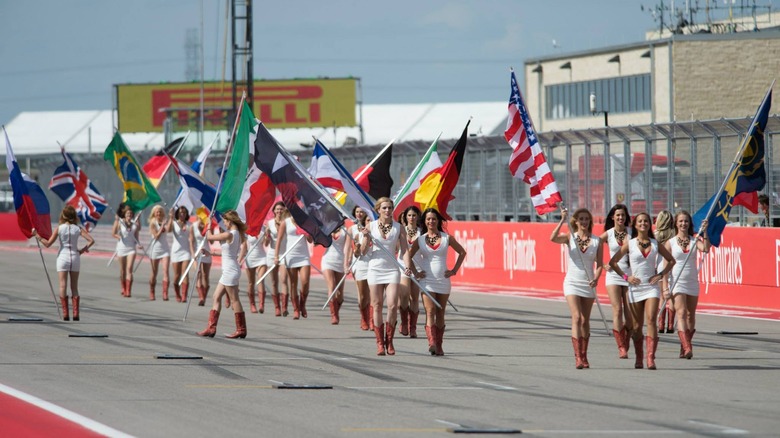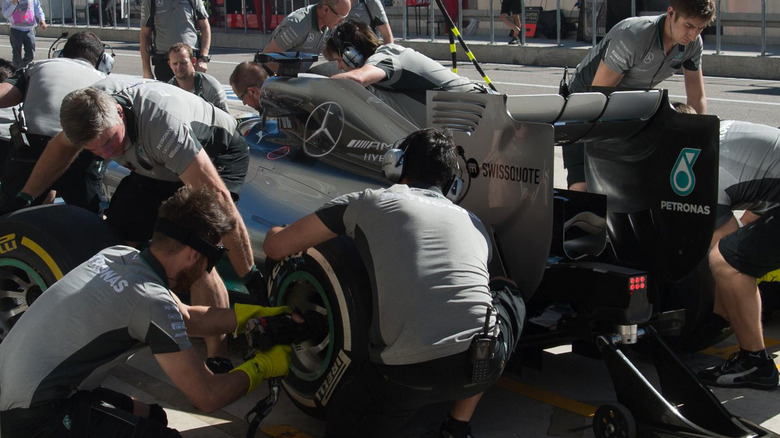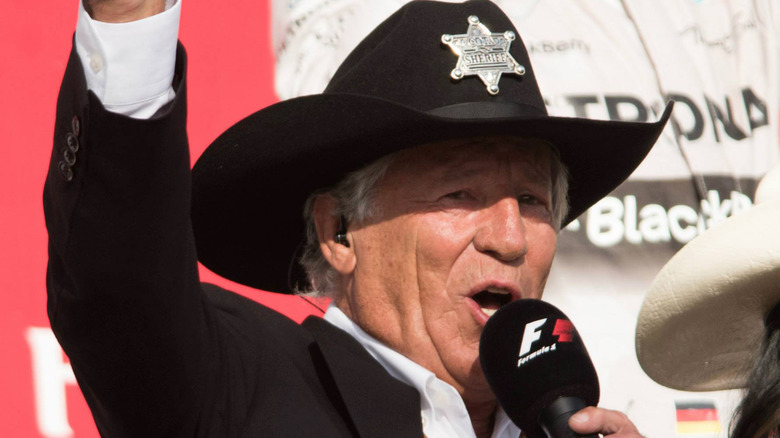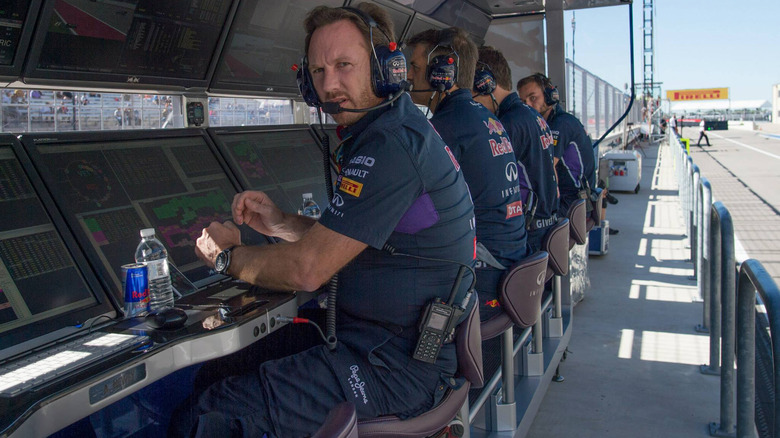Everything A New Fan Should Know About Formula 1 Racing
I have spent much of the last decade covering auto racing as a writer and photographer. That experience includes covering three United States Grand Prix races from trackside at Circuit of the Americas in Austin and writing extensively about Formula 1 for other outlets before coming to SlashGear. The privilege of being able to wander the pits with camera in hand while cars screamed by at over 200 miles per hour was a dream come true after many years as a fan of F1 and the drivers who quite literally risk life and limb to entertain racing fans around the world.
Formula 1 continues to change grow in popularity each year, thanks in no small part to the exposure provided by the Netflix behind-the-scenes docudrama "Formula 1: Drive to Survive." For readers who have just started watching F1 races or are wondering what all the fuss is about, I offer the following primer on everything Formula 1 newbies need to know.
Qualifying happens in three stages
Before the actual race begins on Sunday, Formula 1 drivers participate in a three-phase qualifying process to determine the starting order for the race. The 2024 F1 field consists of 20 drivers competing for 10 teams. Each Saturday, all 20 drivers take to the track for the Q1 session, which lasts 18 minutes. After Q1, the five slowest drivers earn starting positions 16-20 and are eliminated from further qualifying. The five slowest drivers in the 15-minute Q2 session start the race in positions 11-15. They cannot participate in Q3, which lasts 12 minutes and sets the starting order for the first 10 spots. The fastest driver in Q3 earns what is known as 'pole position,' giving them an advantage heading into the first turn of the opening lap of the race
Formula 1 laps are timed to the thousandth of a second, and sometimes that precision is required to separate one driver's best lap time from another's. Drivers can also incur grid place penalties during practice or qualifying for unsafe driving or other rules violations.
Formula 1 is truly an international sport
While NASCAR hasn't held a Cup Series race outside the United States since the 1950s and IndyCar races have been limited to the U.S. and Canada for more than a decade, Formula 1's 24 races this year are scheduled to run in 21 different countries on five continents. Since the first official F1 race at England's Silverstone circuit in 1950, the series has run more than 1,100 races in 34 countries. Entering this season, Italy had hosted the most races with 105 and Germany was second with 79. The United Kingdom held its 79th Formula 1 Grand Prix earlier in July, and the United States will also match that figure with the running of the Las Vegas Grand Prix this November.
That will be the third race in the U.S. this year, following the Miami Grand Prix in May and the United States Grand Prix at Circuit of the Americas just outside Austin in October. Although the U.S. hosts more races this year than any other country (Italy is next with two), Florida native Logan Sargeant is the only American driver in the field this year.
41 countries have sent drivers to Formula 1. The U.K. tops the list with more than 160 competitors. The United States, Italy, France, and West Germany round out the top five, and the current field features drivers from 15 different countries.
Sound tire strategy and fast pit stops are critical
Winning a Formula 1 race or season championship comes down to much more than just driving fast and avoiding crashes. Each team is given the same allotment of 13 sets of tires each weekend and must allocate them for use in practice, qualifying, and the race. Official F1 tire supplier Pirelli chooses three of the five available tire compounds for each weekend based on track conditions. The hardest of the three is labeled with a white ring, the softest with red, and the one between with yellow. Softer tires provide more grip and faster lap times, but wear out quicker than harder compound tires. Red, white, and yellow tires have no tread, unlike the blue rain tires and green-walled intermediate tires.
Each driver must use at least two different compounds in each race, necessitating a minimum of one pit stop. The fastest crews can complete tire changes in two and half seconds or less. During the race, strategists work with the team principal (who is similar to a head coach) to determine when to make stops and which tire compound to use in the race's different phases. Seconds lost during a botched pit stop or from the wrong tire choice can sometimes be the difference between a podium finish (the first three places) or failing to earn any championship points by finishing outside the top ten.
At season's end, the driver and team with the most total points are awarded separate championships.
Phil Hill and Mario Andretti are the only American Formula 1 champions
Of all the Americans to race in Formula 1, only Phil Hill and Mario Andretti have won the driver's championship. Although Andretti was born in an Italian town called Montona that is now part of Croatia, the Andretti family fled their home after World War II and came to the U.S. in 1955. They settled in Nazareth, Pennsylvania, where Mario and his twin brother Aldo began racing. Mario went pro in 1964 on the U.S. Auto Club circuit, three years after Hill won the F1 title for Ferrari. Andretti first competed in Formula 1 in 1968 and won his first F1 race for Ferrari in 1971. He took the checkered flag six times for Lotus in 1978 on the way to the championship, clinching the title in his country of birth at the fabled Monza circuit.
Andretti was the first person to win both Formula 1 and IndyCar championships, as well as the only driver to win the Daytona 500, Indianapolis 500, and Formula 1 driver's championship. He is also the last American to win a Formula 1 race, with that drought stretching back to the 1978 Dutch Grand Prix. Mario's son Michael recently won approval to enter a team in Formula 1 from the Federation International de L'automobile (FIA), which governs most of the world's major racing championships. Despite that endorsement, Andretti's bid has encountered opposition from Liberty Media, which owns Formula 1.
Lewis Hamilton has won more F1 races than any other driver
Although Andretti is inarguably the greatest race driver ever across multiple formats, England's Lewis Hamilton has had more success in Formula 1 than any other driver. Hamilton is tied with Germany's Michael Schumacher for the most F1 driver's championships with seven. Hamilton won six titles in seven years from 2014 through 2020, and he holds the all-time record with 105 Formula 1 race wins as of this writing. Schumacher is second with 91 and won five straight championships with Ferrari from 2000 through 2004.
Hamilton also holds the mark for most pole positions with 104, which tops Schumacher's 68 by more than a full season's worth of races. He missed out on the title by a single point to Kimi Raikkonen in 2007, his rookie season with McLaren. That would have made him the first true rookie to win the driver's title. Nino Farina won in 1950, but that was the first season of Formula 1 racing, so technically every driver was an F1 rookie.
Hamilton won his first driver's title the next season with a last-lap pass of Timo Glock at the Brazilian Grand Prix, making him the youngest F1 champion ever at the time at 23 years and 300 days. He joined Mercedes in 2013 and helped that team win eight straight constructor's championships from 2014 through 2021. Hamilton will leave Mercedes to join Charles Leclerc at Ferrari in 2025.
Red Bull is the current dominant team
Since Mercedes' reign atop the standings ended three seasons ago, Red Bull Racing has replaced the Silver Arrows as Formula 1's dominant squad. Red Bull won 15 straight races spanning the 2022 and 2023 seasons en route to two straight constructor's championships, and Belgian-born Dutch sensation Max Verstappen has won the last three driver's titles for Red Bull. He made his debut at age 17 in 2015 for Red Bull's junior Toro Rosso team, making him the youngest driver in F1 history. The next year, Verstappen became the youngest driver to win a Formula 1 race at 18 years and 228 days in one of the greatest moments in Formula 1 history. Verstappen won an astonishing 19 of 23 races in 2023 — another Formula 1 record. Verstappen and Red Bull lead the 2024 driver's and constructor's standings, although McLaren is mounting a serious challenge for the latter trophy behind stellar driving from young Brit Lando Norris.
Verstappen and Hamilton waged a dramatic battle for the 2021 title that went down to the last lap of the final race in Abu Dhabi. Verstappen made the most of a controversial safety car to engineer a final-lap pass for the race and championship wins. Verstappen has won 51 races since the start of the 2021 season, cementing his place as the driver to beat each weekend. Teammate Sergio Perez has won five races in that same span in the dominant Red Bull car, but he could be replaced for next season due to a drop-off in his performance this year.
